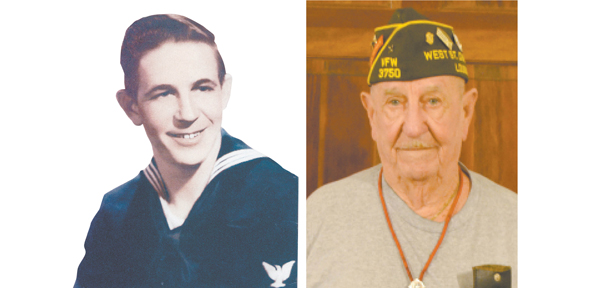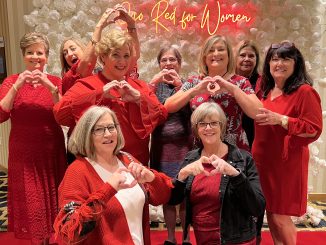
Linton Bergeron, 85, was aboard the M/V St. Charles ferry going to work as a machinist at Shell Chemical early on the morning of Oct. 20, 1976 when he saw what was about to happen.
Bergeron was just a passenger that day, but had extensive experience working aboard boats as a Navy veteran after which he spent five more years working as chief engineer on the very ferry he was aboard.
At that time, the ferries served travelers moving between the east and west banks of St. Charles Parish before the Hale Boggs I-310 bridge was built.
The other ferry, the M/V George Prince, was coming across from the East Bank side of the Mississippi River and Bergeron saw a tanker ship coming toward the M/V George Prince.
“The ship kept going for him and blowing the distress signal,” he said. “The ship started to try and back out but it was too late and it hit the George Prince on the side and the ferry boat just started flipping completely over and turning upside down,” he said.
Of the 96 aboard the George Prince, only 18 survived. Bergeron helped pull those who were overboard out of the water.
“I was just taking them and picking them up and putting them on the deck. I don’t know where I got the strength from, I am not a big man,” he said.
He attributed his ability to stay calm under pressure and help out in the situation to the training he received years earlier in the navy.
Bergeron said joining the military and serving for five years turned him from a boy into a man.
His time in the service began in late 1946 after the United States had declared victory in Europe and Japan and World War II was officially wrapping up.
With the war over, Bergeron, 18 at the time, still decided to join the Navy. He had spent his early years working his way up through the ranks at W.L. Bergeron Machine Shop and Garage in Luling, which was owned by his grandfather.
“We had a foundry, we had a blacksmith shop, we painted cars, did body work, rebuilt engines, sold gasoline and also had a grocery store in the same building,” he said. “I started working in that shop when I was 10 years old sweeping the floors for 10 cents a week.”
At the age of 12, Bergeron started learning how to work machining tools and then went on to master all aspects of the business. However, because he was working for a family business he was never able to keep much of the proceeds.
“The most I ever made was $7 a week when I was coming up,” he said. “Just about everything I learned I got it from there.”
After his father took over the family business, and a few local companies that used their services went out of business, they started to go through some hard times.
“We didn’t have much business,” he said. “I was more depending on Daddy to make a living. So I said, well I just think I will go join the Navy.”
Bergeron thought he was not alone. He and a group of friends planned on joining at the same time, but that is not quite how it worked out.
“There was six of us that were going together, but when I got to the custom house I was the only one there,” he said.
Bergeron had never been out of Louisiana before and was expecting an adventure. That is what he got when he was put on a train to Chicago where he attended an engineering training program.
“When I got up there I had my white hat on and it got cold. And when I went to get my hat off it was frozen to my head. It left a big ring around it. Nobody told me it was going to be that cold!” he said.
Despite having to deal with harsh weather conditions, Bergeron handled the 10 months he spent in Chicago well.
“They knew about me coming out of a job like I had so they put me in basic engineering,” he said. “They hardly were teaching me anything. Just about everything they were teaching me I had already done before.”
After getting out of job training, Bergeron was assigned to the San Diego-based USS Nereus. The ship was a submarine tender and served as a base of operations for repairing submarines.
For the next five years, Bergeron lived aboard the ship.
“You get used to it, but it wasn’t comfortable,” he said. “You only had a few feet from one bunk to the next and it wasn’t any wider than three feet. It was kind of hard sometimes.”
From San Diego the ship deployed to Hawaii for two years, which was not very developed at the time and was still over a decade away from becoming a state.
“My buddy and I we bought a ‘32 Ford panel body truck. We rebuilt the engine in it and that is what we used to run around Pearl Harbor up in the mountains and all. It was real nice,” he said.
His time in the navy and aboard the USS Nereus gave Bergeron a chance to develop.
“I learned how to be a man. I learned you are not a child anymore. You have to learn how to take care of yourself and do for yourself and figure out things for yourself,” he said.
Bergeron was particularly sought out for his machinist skills. With the ship being away from port and on duty in the Pacific, submarine parts were often times readily available and Bergeron would have to improvise some repairs. In fact, he received a citation for engineering a form that could be used to make an important submarine part.
“I made a mold for the periscope seal, the seal that goes around it to keep the water out,” he said.
The challenge of doing such a job was attractive to Bergeron, but he also realized how important his work was to those who depended on him.
“You better do a good job. If you don’t they get out in the water and there is nobody to fix it and they are going under,” he said.
Although Bergeron initially signed up for four years, he was kept on for an extra year after the Korean War broke out. However, he saw time in war zone.
He said the time he spent in the armed services changed his life for the better and led him into a successful 31-year career as a machinist at Shell Chemical.
“It helped me out tremendously in my job as far as what to do. It was like working in the service. They had me in there aboard ship and when I was here it felt much like the same thing,” he said.
The oldest of four children, Bergeron’s two younger brothers also joined the Navy and his younger sister joined the Air Force.
“I am the oldest so I guess they followed me. We were always patriotic though,” he said.
One of his grandsons, Randy Clouatre, later joined the Marine Corps as well.
“It makes me proud,” he said. “I think that every young boy ought to spend some time in the service. It will change them all over. It will make a man out of them.”
This profile is part of an ongoing series between the St. Charles Herald-Guide and the Veterans of Foreign Wars Post 3750.




Be the first to comment